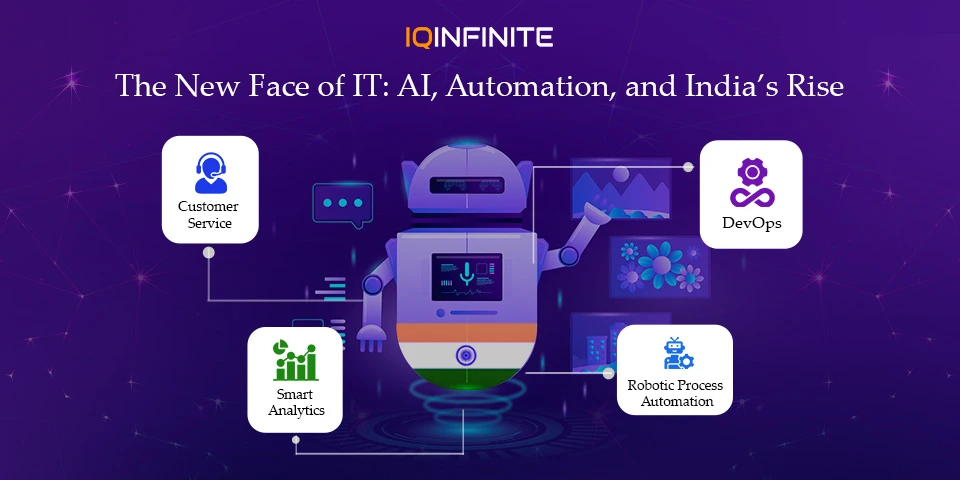Inside the IT Evolution: AI, Automation and India's Tech Surge

India is no longer just a backend destination for IT services it's now at the forefront of global tech innovation. Over the past decade, the country’s tech landscape has undergone a profound transformation, driven by the rise of artificial intelligence (AI), automation and a new wave of digital-first thinking. What was once a story of outsourcing is now a narrative of innovation, agility and leadership on the world stage.
AI and automation have become more than just buzzwords they’re reshaping how Indian businesses operate, deliver and grow. From chatbots transforming customer service to intelligent algorithms optimizing supply chains, companies across India are using these tools to leapfrog traditional limitations. And it's not just large corporations; startups and mid-sized firms are just as invested, experimenting boldly and building products that compete globally.
AI & Automation: Driving a New Tech Era
Key Developments Include:
- AI in Customer Service: Natural language processing and machine learning are powering chatbots and virtual assistants, enabling faster and more personalized support.
- Automation in DevOps: Automated CI/CD pipelines and infrastructure as code (IaC) are streamlining software delivery and deployment.
- Smart Analytics: AI-driven analytics platforms can predict consumer behavior, detect fraud and enhance decision-making across sectors.
- Robotic Process Automation (RPA): RPA tools are reducing manual effort in areas like finance, HR and supply chain management.
India’s Strategic Edge in the Digital Race
Government support has also played a key role. Initiatives like Digital India, Startup India and the National AI Strategy are actively promoting digital inclusion, innovation and skill development. Additionally, India’s deep integration with global IT markets makes it agile and responsive to global trends from cloud computing to AI ethics.
Real-World Applications Across Sectors
- Healthcare: AI is being used for early diagnostics, robotic-assisted surgeries and disease prediction through big data.
- Finance: Automation is streamlining trading, credit scoring and fraud detection while AI-powered chatbots enhance customer experience.
- Retail: From personalized marketing to inventory optimization, AI is making businesses smarter and more customer-centric.
- Manufacturing: Smart factories use IoT and AI to increase efficiency, predict maintenance need and minimize downtime.
Challenges Along the Way
Equally important is the support for workers whose roles may be displaced by automation. Companies and governments alike will need to provide robust training and transition pathways to help individuals move into new, tech-enabled roles.
Conclusion
Ultimately, the key to long-term leadership lies in building a strong public-private ecosystem that fosters research, development and innovation. With the right blend of policy, talent and technology, India is not just participating in the global tech evolution it's helping to lead it.
